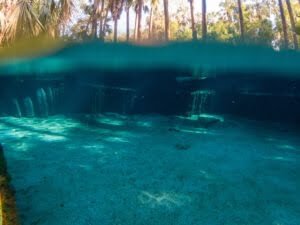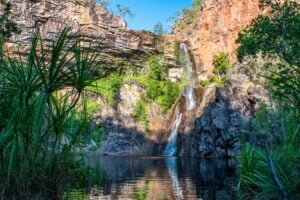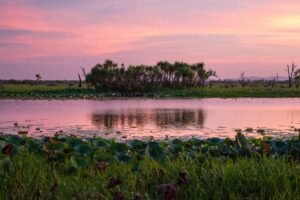After Exmouth, we had a decision to make: do we head south (to where we had already been) to more pleasant summer climates but also more crowds, or do we embrace the hot, humid weather of a wet season in Northwest Australia? We chose the latter, so after a visit to Karijini and a wander through the Pilbara, we arrived in Broome in mid-November, during what’s called “the build-up.” The build-up is a period just before the wet season where you can actually feel in the air the storms and rain gearing up to unleash their fury.
We had a couple impressive storms during our first few weeks in Broome and thought that this would be the norm for the duration of our stay. However, we quickly learned of what’s known as the “Broome Bubble.” A decent storm will look like it’s heading straight for town but always seemed at the last minute to veer off and miss us completely. When we couldn’t swim in the ocean because of crocs, sharks, and stingers, it made for a very hot and humid summer, but one we still greatly enjoyed.

BROOME TOWN
Certainly in the dry season, but even in the wet, there is a lot to do and see in the town of Broome. The Broome Historical Museum offers a great look at the fascinating history of this town, which includes pearling, dinosaurs, and wars. For another historical experience, catch a movie at the Sun Pictures, the oldest running outdoor cinema in the world.
If you’re in the mood for refreshment, you can’t go past Matso’s Brewery and their famous Mango Beer; it’s one of a kind and very tasty! Around the corner is Black Stump Gallery, an art gallery which features an eclectic mix of talented artists, including the colourful work of Emma Blyth. The Mangrove Hotel is another great spot for a drink with views out over the mangroves and waters of Roebuck Bay, especially spectacular at sunset.

The Courthouse Markets are situated next to, you guessed it, the courthouse in town, and they run year round (yes, even during the wet season!) on the weekends. Here you’ll find great souvenirs, art, pearl jewelry, fresh food, and much more.
LOCAL BEACHES
The beach most associated with Broome is the iconic Cable Beach – one look at this stunning stretch of white sand beach and you’ll see why! It’s a popular sunset destination; watch the sun dip below the horizon from the elevated vantage point at the surf club or park your 4WD directly on the beach as the famed camels of Cable Beach saunter by.

Cable Beach is also a turtle nesting ground, which lucky for us the nesting and hatching seasons coincide with the wet season so we got to witness both a turtle nesting and a hatchling make its way out to sea. A magical experience for sure!

Another popular sunset spot is Gantheaume Beach. It’s preferred by the locals and tends to be less busy than Cable Beach. At the end of Gantheaume Point are beautiful red cliffs and, depending on the tides, rock pools that are safe to swim in year round. At very low tides you can go out and search for dinosaur footprints.

Town Beach, although not quite as scenic as Cable Beach, is a good spot to launch a boat or fish off the beach (someone caught a Barra there the day before we arrived!). Also due to the movement of weather patterns, it’s one of the best places to watch incoming lightning storms; we sure saw our fair share of impressive shows from there! At very low tides (less than 0.5 meters), you can walk out to remains of a Catalina flying boat wreck and see some of the interesting critters that call these tidal flats home.
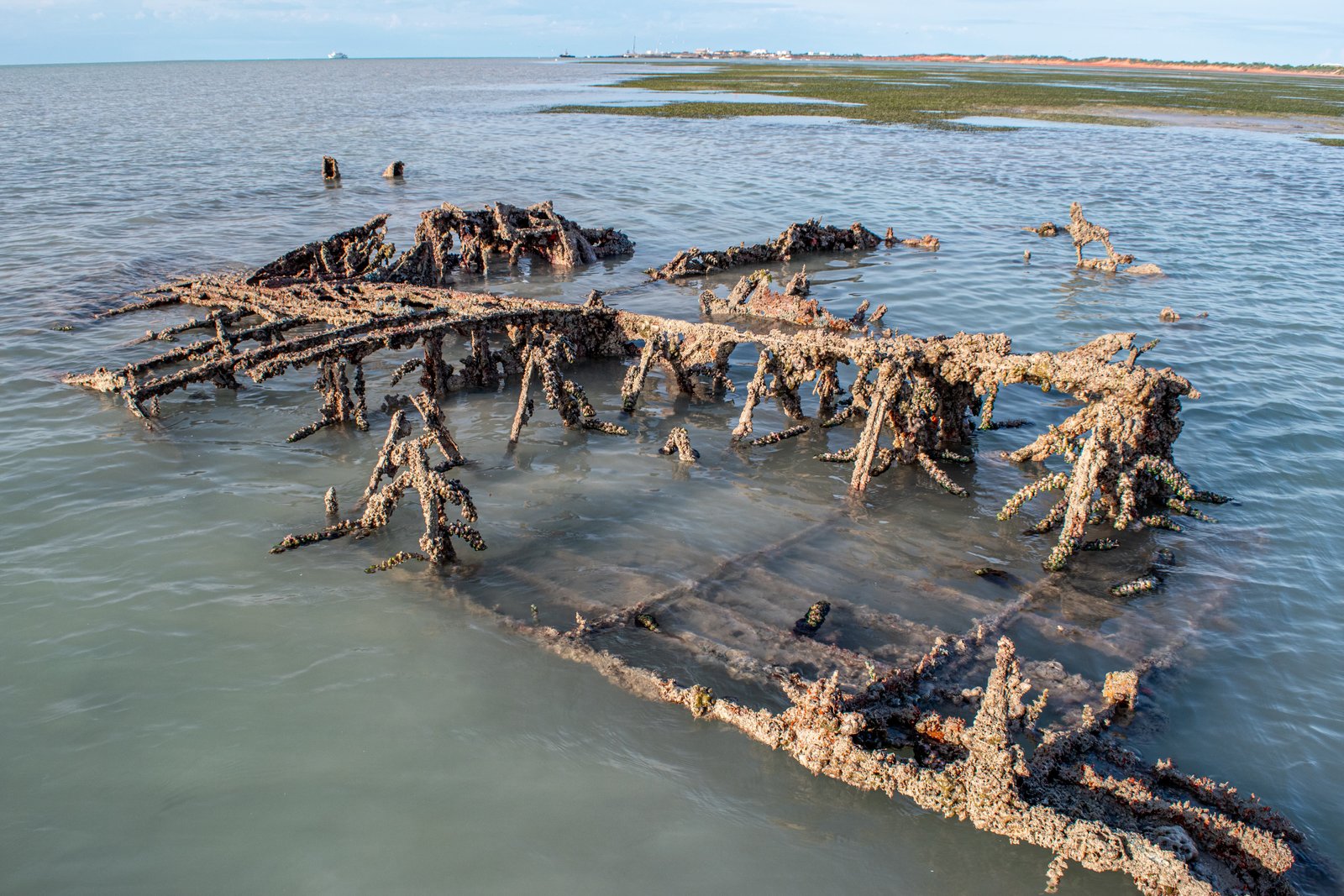
It is also a perfect place to see the Staircase to the Moon, a natural phenomenon where the light of the full moon reflects on the tidal flats as it rises, creating a “staircase” of light leading to the moon, which occurs around March to November every full moon. A popular night market runs here on Thursday nights and during the Staircase to the Moon in the dry season. Currently a jetty is being built here and is expected to be finished by August 2021.
ENTRANCE POINT, THE OLD JETTY AND RIDDELL BEACH
If you really want to find a Broome beach away from the crowds, Entrance Point is your best bet. Here you’ll find the old Broome Jetty, which is occasionally open for fishing. During low spring tides, walk under the jetty to explore the reef and rock pools – just make sure you wear good water shoes to protect your feet! It’s a great spot to see octopi so keep an eye out for them camouflaged against the rocks or crawling their way towards their next meal.

Continuing around west towards Riddell Beach, you start to see interesting rock formations. Riddell Beach is dog-friendly, has boat launching facilities, and makes a great place to explore and watch the sunset or incoming storms. During the wet season, you can sit with a drink at the fishing club and enjoy the view.

NORTHERN BEACHES
The coastline just north of Broome along Manari Road is perfect for a day trip or free camping along the beach. The first stop is Willie Creek, a great place to learn all about the pearling industry, from its early start to modern day. There are some options for free camping nearby, but there is a resident saltwater croc here so swimming is definitely not advised! Most of the camp spots in the southern part of Manari Road are a 72-hour maximum stay, which is due to the fact that by 3 days time, a crocodile will have learned your habits and will be more likely to attack. Just north of Willie Creek is Bared Creek, another popular fishing and camping spot. Making your way through the maze of tracks you can even find a beautiful white sand beach to camp on!

Toward the top end of Barred Creek, cliffs start to rise as well as a petrified forest that’s worth a look. Next up is Quandong Point, which is usually popular with caravaners, although we didn’t find it as scenic as some of the other locations along Manari Road. Continuing north is one of the highlights of the northern beaches, James Price Point; the unique landscape here will make you feel like you’re on another planet! The deep red undulating cliffs are unlike anything we’ve ever seen. Never have we been happier to have a drone to properly capture it. As a bonus you can free camp directly on the beach among this unique landscape.

For most people, this is the furthest along Manari Road that they’ll go, but there’s one more little hidden gem that we discovered (thanks to a local’s tips and Wikicamps). Just north of James Price Point is a beach access point for 4WDs, and at the right tides you can access some pretty spectacular ocean rock pools, like having your own little infinity pool right on the beach. Just be mindful of the tides; it can be very easy to get stranded if the timing’s wrong!

DAMPIER PENINSULA
Dampier Peninsula sits just north of Broome and has some of the most spectacular coastline of the region. It is also rich with Aborignal culture of the Bardi-Jawi people. Unfortunately due to Covid-19, a lot of the peninsula was shut during our time there to protect the local Indigenous communities, including iconic places like Beagle Bay and Ardyaloon. Also, with it being the very end of the dry season, a lot of places were shutting up until the start of the following year’s tourist season. Nevertheless we were still able to visit some pretty spectacular places during our time there: Kooljaman, Cygnet Bay, and Pender Bay.
Kooljaman sits right at the very northern point of the Dampier Peninsula at Cape Leveque and is a wilderness campground that is 100% Indigenous owned. It is also one of the few places that you can apparently swim year-round, safe from the aforementioned crocs, stingers, and sharks. And the beach here is a real beauty! The perfect white sand and dazzling turquoise water are oh-so-inviting, and if you have a bit of an extra budget, the beach shelters will allow you to camp on this heavenly stretch of coast on a spot all to yourself. Just be aware that not all beach shelters are created equal; some have much better views and beach access than others.

At low tide, you can walk west from the swim beach around to the beautiful pindan (or red soil) cliffs that drop onto the beach. It is a colourful array that needs to be seen to be believed.
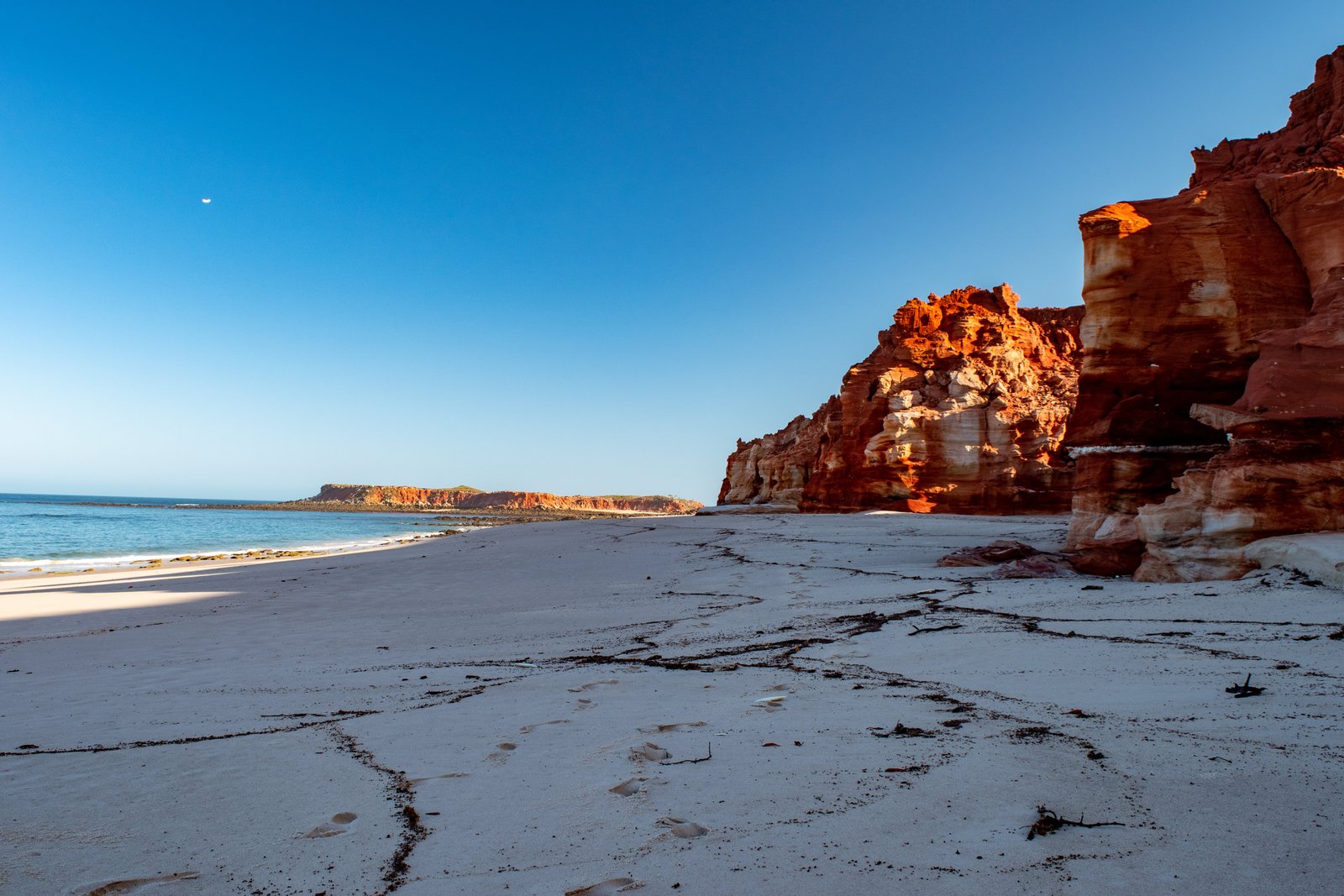
Being Indigenous owned, there are numerous opportunities for cultural experiences here, mostly available during the dry season. On our second visit to Broome and Kooljaman in June, we opted for the Brian Lee tag-along tour and were not disappointed! From exploring traditional middens to spear fishing and mud crabbing, the day is fun-filled and educational and Brian Lee is bound to keep you entertained and engaged the whole time.
Cygnet Bay, which is situated east of Kooljaman towards the top of Dampier Peninsula, is a pearl farm which also offers camping. The bush camping itself is nothing flash but the ammenities are pretty good. And being there during the buildup, the beautiful infinity pool was much appreciated!

Like Willy Creek, they are an active pearl farm and offer many educational tours on the pearling industry. They also offer some unique boat tours, such as the Reef Waterfall tour. Ever seen a waterfall in the middle of the ocean? Neither had we, until we got to Cygnet Bay. Due to the high tidal movements in this part of the world, a nearby reef is only exposed as the tide starts to fall. It is quite an impressive sight to see!
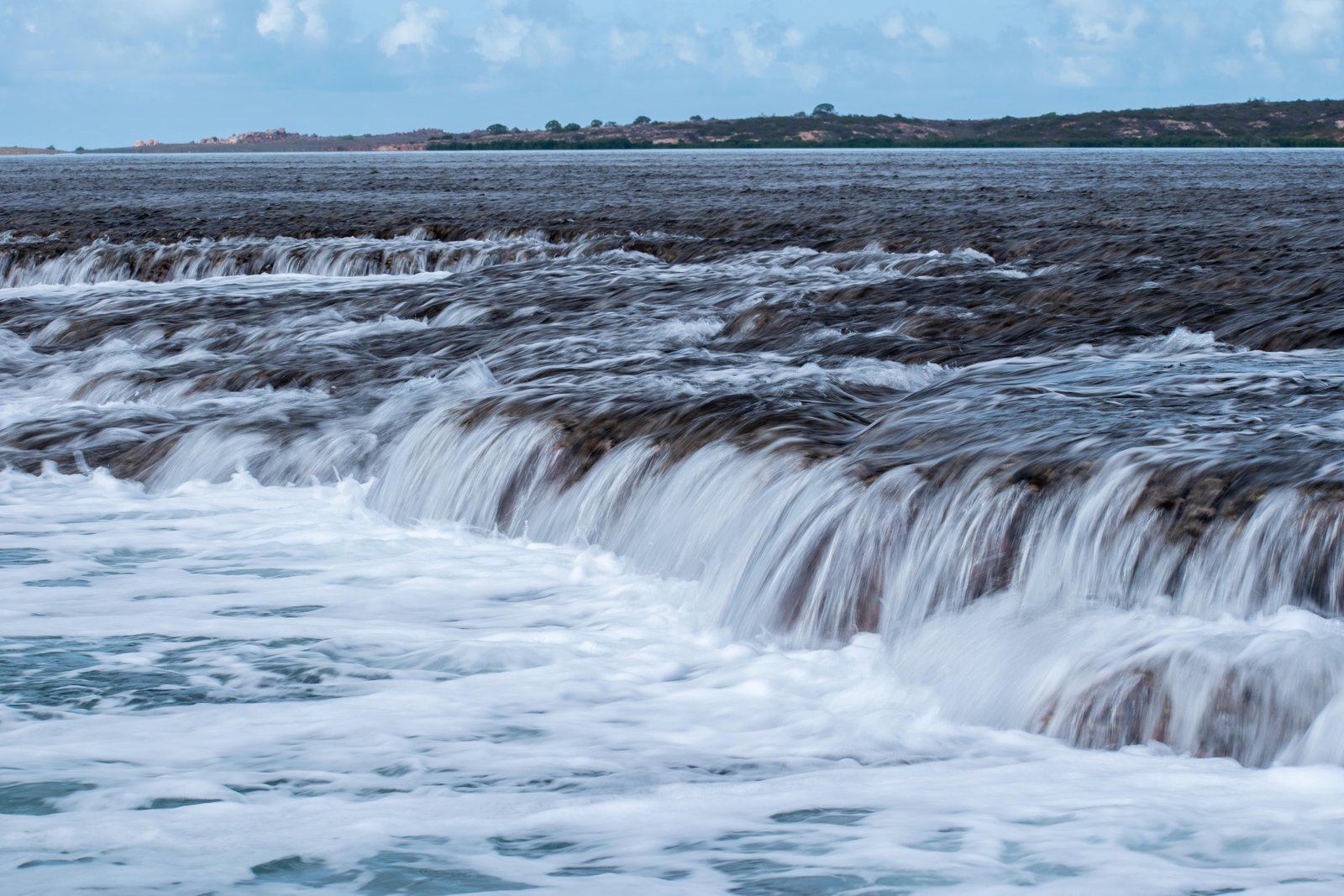
Last on our wet season tour of Dampier Peninsula was Pender Bay. This low-capacity campground offers beautiful cliff-side camping with spectacular views over the bay. If you’re lucky, you can even get a site with your own private baths (there’s only one so you have to be quick!). Normally swimming in the bay is considered safe; however, there had recently been a croc sighting when we visited so swimming was not recommended. The highlight of our stay, besides the magic views from our campground, was the walk to the sea caves and rock pools. Only accessible at low tide, the walk involves beach walking and scrambling over rocks to explore beautiful rock formations and refreshing pools to have a little croc-safe dip before returning to camp to soak in the views. It’s been one of the most scenic camps we’ve had on our trip so far.
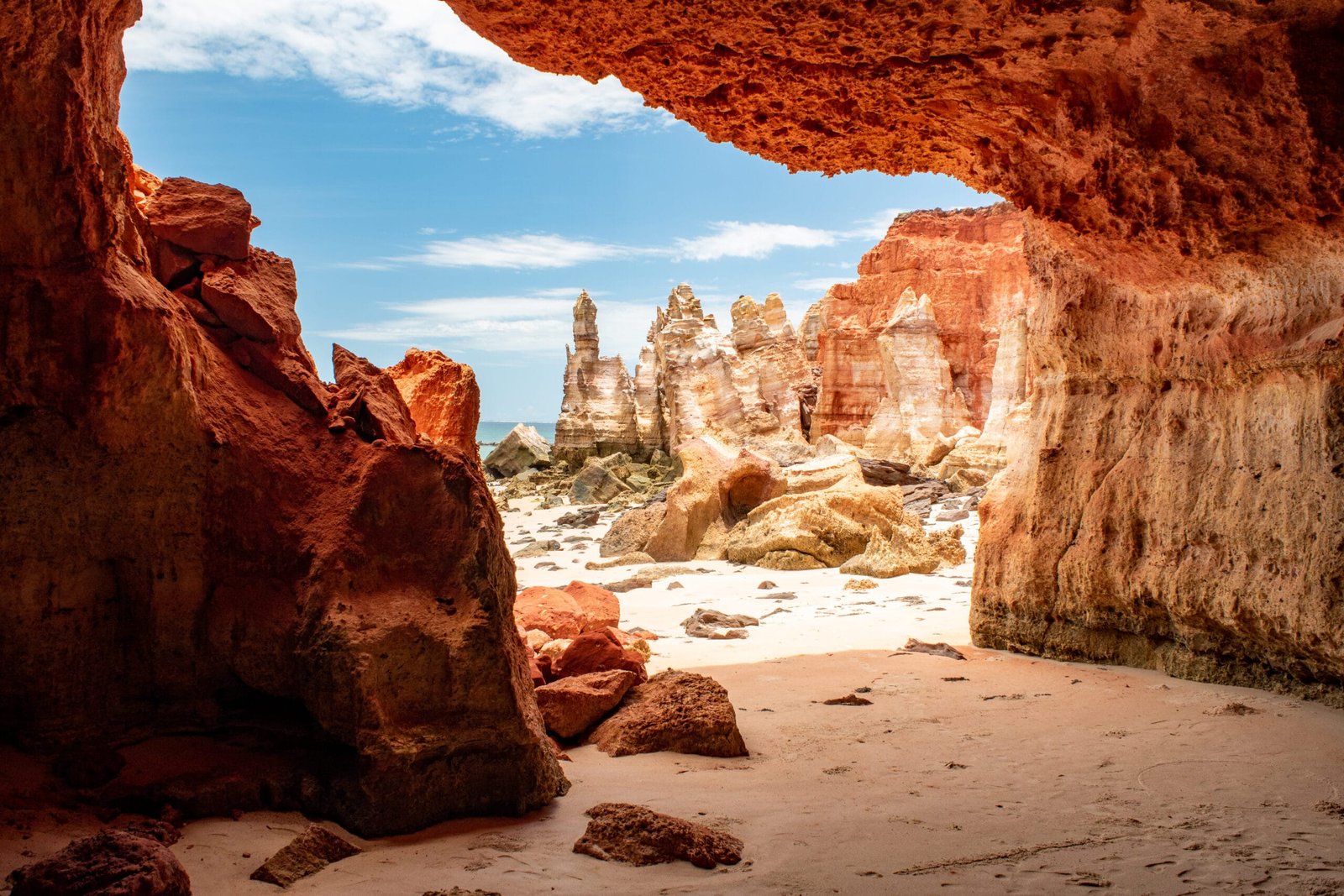
When visiting the Dampier Peninsula, keep in mind that while the Cape Leveque Road has been fully sealed, most of the turnoffs are still unsealed and some places do not accept caravans and large RVs.
Although we didn’t have the typical tourist’s experience of Broome thanks to the wet season and Covid-19, there is so much on offer in this part of the country, no matter what time of year you visit. Nevertheless, with the amazing wet season of 2020-2021, the waterfalls of the Kimberley and Kununurra were calling, and we were so happy we answered the call!

